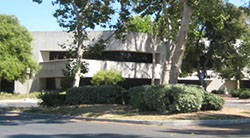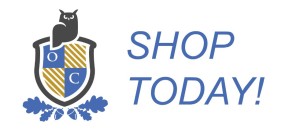
Students are like snowflakes: no two are alike. They have different likes and dislikes. They learn in different ways. They have different experiences. They have different strengths and weaknesses. They learn at different rates, are differently motivated, and have their own interests. All this points to the need for instruction and assessment to be individual, too.
In some interesting parallels, a teacher needs to have a full understanding of her student’s needs, much like a doctor working with a patient. And a teacher needs to know what will work best for a student, much like a cook preparing a special soup for her guests.
The Teacher as Doctor
Doctors examine patients who have unique diseases and symptoms. They may be similar to other patients, but their ages and physical conditions may differ, along with certain susceptibilities, allergies, resistance and other unique characteristics.
The doctor conducts some tests and comes up with a diagnosis for each patient. That diagnosis will tell the doctor and patient what steps will be needed to improve the patient’s condition. The diagnosis comes from the battery of tests used to assess the patient’s condition.
As the treatment continues, there may be subsequent, ongoing testing and assessments. This will help the doctor change the course of treatment if necessary. And at some point, a final assessment will be made to acknowledge the end of treatment.
The similarities are striking when comparing a doctor-patient relationship to a teacher-student relationship. In both cases, there are differentiated assessments and instructions unique to each situation.
As disease and patient diagnoses are unique, so are learning needs and the associated assessments and instructional strategies that will lead to positive outcomes for students.
The Teacher as Cook
We compared the teacher to a doctor taking care of her patients. We can also compare her to a cook who is making a signature soup for her restaurant. She tastes the soup and adds whatever spice or another ingredient she thinks will improve the flavor.
She may test the soup more than once until she gets it just right. This is a kind of ongoing testing, a formative testing, that is designed to help the cook change strategies.
Assessments in the classroom can be formative and ongoing as well. This kind of testing can tell the teacher how the student is doing along the way. It lets teachers monitor a student’s evolving knowledge, understanding, and skills.It helps the teacher change course and come up with new strategies, materials, curriculum, and methods that can improve the student’s overall learning performance.
Formative testing measures instructional outcomes and leads to differentiated instruction for each student. It usually starts with a pre-assessment diagnostic to see where each student is before new instruction is given.
Sometimes schools use standardized tests throughout the year to test students, and the tests are scored by outside agencies. But these are not as valid as in-school tests because of the time involved – students get feedback and react with new learning on a continual basis, and standardized tests do not measure this day to day change.
The Student as Guest
When the cook tastes the soup, or the teacher conducts a formative assessment, the result is a change to the presentation method involved. When a guest tastes the soup, the final outcome becomes known. Is it good or bad? Did it meet the goal intended? Was it received well?
This is a summative assessment and it applies to students as well. Summative assessments are designed to see the outcome of the instruction. How well did the student receive the instruction? How much could she demonstrate her knowledge of the content that was taught?
Summative testing shows where the student is, how much she has learned, and how much progress she made since the last summative test. It measures student outcomes. This is a valuable metric for both student and teacher, because the teacher wants to know about progress, too, and whether the student has mastered the lesson and is ready to move on.
Unique Assessments Lead to Differentiated Instruction
Because no two children are alike, instruction and assessments should be different to ensure that learning happens. Differentiated instruction and assessment requires that teachers create a variety of entry points so that consideration will be given to different student abilities, strengths, and needs. Students also need varying opportunities to demonstrate their knowledge based on the individual teaching, thus differentiated assessment.
Some educational researchers have suggested that differentiated instruction requires three elements: choice, power,and competence.
To be successful, differentiated instruction empowers students to learn the way they want to, the way they do it best, to exercise choices. Those choices should include content, nature of assignments, and if possible media.
They should become competent in what they study to avoid distractions and frustrations. They should also enjoy the process. It is similar to playing video games. If the student is engaged, making choices, and enjoying the learning process, she will be motivated to “stay with it,” learn and grow.
One teacher took the approach of providing a “homework menu” where students could choose different sets of problems to get credit. Some sets were easier than others. The teacher found that the problems that were chosen represented the student’s interest and engagement in the lesson being taught. Some students chose the easier set of problems, some chose the most difficult set, and some chose a mixture.
This led the teacher to an understanding of what each student needed to learn about the concepts being taught. She was able to change strategies.
She was further able to follow up with an “assessment menu.” It allowed students to accumulate points in a variety of different ways. Students could earn 800 points for a “B” or 900 points for an “A.” Students could get a “B” by completing four 200-point assignments or by completing eight simpler 100-point assignments. All assignments covered the same concepts. The simpler ones were not as daunting as the larger ones but still gave the students a chance to show an understanding of the content. The students had the same obligations but not the same assignments.
Differentiated assessment is a strategy to encourage every student to meet the same rigorous standards in different ways. These assessments will save teachers, students, and parents from spending time on tasks that are boring, inappropriate, or excessive. For classrooms to be successful, there needs to be a close relationship between learning targets, assessments (both formative and summative), and individualized instruction.






